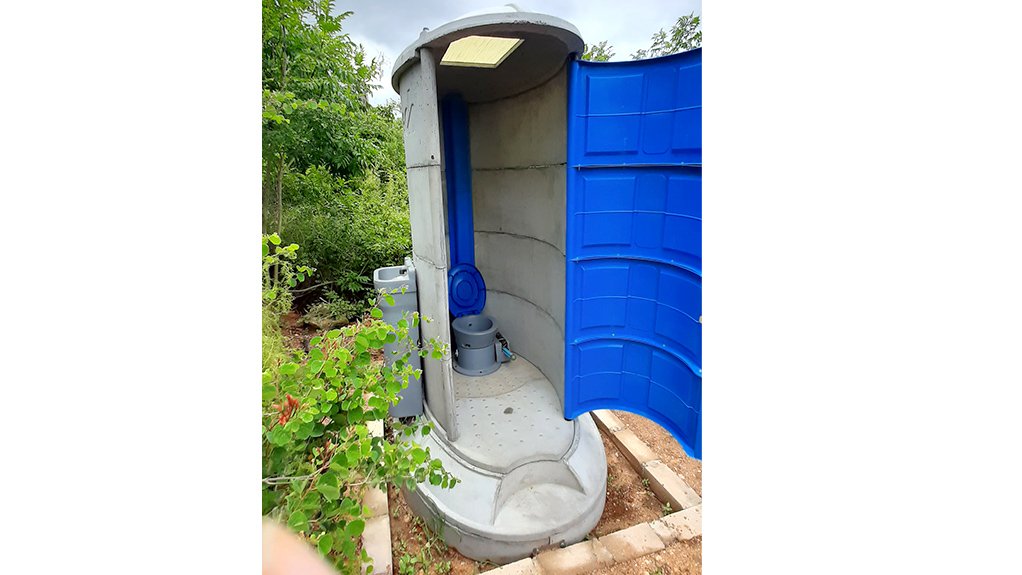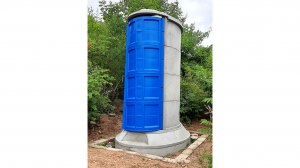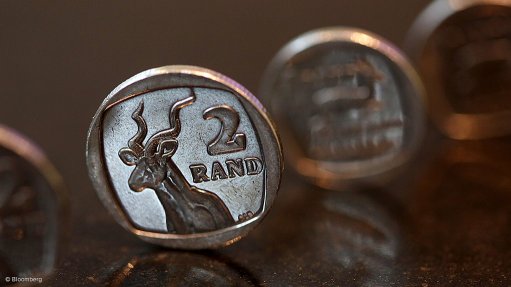Company forges path to safer sanitation




DRY SANITATION TOILET The Khusela Dry Sanitation Toilet aims to eliminate pit latrines in South Africa by 2030
INNOVATIVE SANITATION The dry sanitation unit addresses shortcomings associated with pit latrines
ROBERT ERASMUS The use of pit latrines poses severe dangers to the health, safety and environment of communities
Concerted efforts are under way in South Africa to address the use of pit latrines, which remains a pressing human rights concern, especially in schools and areas with inadequate infrastructure.
Sanitech’s response to these challenges has been to implement a “ground-breaking dry sanitation unit”, says solutions provider Sanitech MD Robert Erasmus, who explains that the unit addresses shortcomings associated with pit latrines.
The main structure of the dry sanitation unit consists of concrete and the door is made of injection-moulded plastic, with a ventilation pipe to mitigate odours. The waste-containment unit has a 1 500-ℓ ‘bladder’, which can be removed without disabling the unit, and a guaranteed life cycle of three to five years.
The units are mobile, and pits need not be dug, which reduces installation costs and limits the abandonment of land. The elliptical shape of the unit maximises space and waste containment, while a rotating bowl disposes of waste, which Erasmus says prevents contact with faecal matter.
The unit is also sealed to prevent insects from entering or exiting the system and uses environment-friendly products to treat waste, all of which address environmental concerns.
However, replacing pit latrines is not without its hurdles, including financial limitations, geographical constraints and administrative inefficiencies.
Sanitech proposes a viable strategy to overcome these barriers through corporate social responsibility initiatives, which it believes could expedite the adoption of practical solutions.
Complementing Sanitech’s endeavours is the Khusela Dry Sanitation Toilet campaign, launched by the Department of Water and Sanitation (DWS) in 2019, which aims to eliminate pit latrines in South Africa by 2030.
The DWS and Sanitech are working together to create a safer, more environment-friendly and sustainable alternative to traditional pit latrines.
The campaign underscores the urgency of the issue while emphasising the necessity of developing sustainable and effective alternatives.
South Africa’s pit latrine crisis is illustrated by some significant numbers: 380 schools lack running water and about 3 392 schools are still dependent on pit latrines, while the repercussions affect teachers and learners, totalling over one-million individuals.
Moreover, an estimated four-million pit latrines are still in use across communities, with only two-million adhering to improved ventilation and construction standards.
“The use of pit latrines poses severe dangers to the health, safety and environment of communities. Accidents, groundwater contamination, and the spread of waterborne diseases are persistent issues,” Erasmus stresses.
This is further exacerbated by the absence of sanitation facilities, such as handwashing stations and proper waste-disposal systems, resulting in unsanitary conditions and increasing the risks of disease.
While an immediate conversion to waterborne sanitation may not be practical, owing to water supply and treatment limitations, the development of safer alternatives, such as the dry sanitation unit, offers promising possibilities.
“By prioritising the implementation of such practical and effective solutions, South Africa can significantly enhance the wellbeing and quality of life of its communities, making strides towards a future where pit latrines are replaced with safe, sustainable and healthier sanitation options for all citizens,” Erasmus concludes.
Article Enquiry
Email Article
Save Article
Feedback
To advertise email advertising@creamermedia.co.za or click here
Comments
Press Office
Announcements
What's On
Subscribe to improve your user experience...
Option 1 (equivalent of R125 a month):
Receive a weekly copy of Creamer Media's Engineering News & Mining Weekly magazine
(print copy for those in South Africa and e-magazine for those outside of South Africa)
Receive daily email newsletters
Access to full search results
Access archive of magazine back copies
Access to Projects in Progress
Access to ONE Research Report of your choice in PDF format
Option 2 (equivalent of R375 a month):
All benefits from Option 1
PLUS
Access to Creamer Media's Research Channel Africa for ALL Research Reports, in PDF format, on various industrial and mining sectors
including Electricity; Water; Energy Transition; Hydrogen; Roads, Rail and Ports; Coal; Gold; Platinum; Battery Metals; etc.
Already a subscriber?
Forgotten your password?
Receive weekly copy of Creamer Media's Engineering News & Mining Weekly magazine (print copy for those in South Africa and e-magazine for those outside of South Africa)
➕
Recieve daily email newsletters
➕
Access to full search results
➕
Access archive of magazine back copies
➕
Access to Projects in Progress
➕
Access to ONE Research Report of your choice in PDF format
RESEARCH CHANNEL AFRICA
R4500 (equivalent of R375 a month)
SUBSCRIBEAll benefits from Option 1
➕
Access to Creamer Media's Research Channel Africa for ALL Research Reports on various industrial and mining sectors, in PDF format, including on:
Electricity
➕
Water
➕
Energy Transition
➕
Hydrogen
➕
Roads, Rail and Ports
➕
Coal
➕
Gold
➕
Platinum
➕
Battery Metals
➕
etc.
Receive all benefits from Option 1 or Option 2 delivered to numerous people at your company
➕
Multiple User names and Passwords for simultaneous log-ins
➕
Intranet integration access to all in your organisation





















